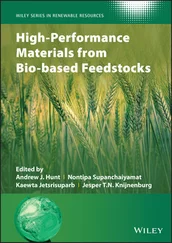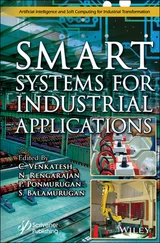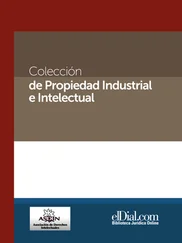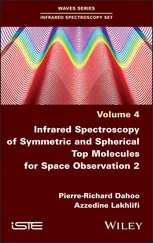The microbial resources have potential in the generation of a wide range of high‐value compounds. This section has explained a few specific examples, the detail of which can be found in the subsequent chapters.
Biosurfactants are used in many fields, such as water treatment, food processing, health, disinfectants, cosmetics, and medicines [9]. Most biosurfactants are produced employing different strains of bacteria, yeast, and molds [10]. The uses of biosurfactants of microbial origin have been demonstrated in various purposes, for example in food processing, water treatment, cosmetics and pharmaceuticals, and bioremediation.
Microbial gum is a polysaccharide molecule mostly produced by bacteria and fungi [11]. These molecules protect the microbes from harsh environmental conditions [12]. These compounds are of widespread use in foods, pharmaceuticals, and cosmetics. The microbial gums are of prebiotic nature. Its uses have also been demonstrated in wound healing and carrier for drug delivery [13]. The demand for microbial gums is steadily increasing in various industries.
The practicality and potential of microbes in cosmetics have been well established. The use of antiaging products is in the spotlight. A variety of cosmetic compounds are produced from cultured microorganisms such as bacteria, yeasts, fungi, and algae [14]. Many compounds, including antioxidants, peptides, and proteins, hold a promising future in the cosmetic skincare sector. Natural compounds not only have the ability to attract the attention of the market but also have valuable properties of potential medical benefits. In this regard, it is necessary to mine a variety of natural resources for novel compounds. The demand for antiaging and whitening products is expected to steadily increase annually [15].
The microbial population is also useful in cleaning of the environment via bioremediation approach. The metabolic activities of many microorganisms have been found to convert unwanted pollutants into harmless compounds [16]. Many fungal strains have been identified that have nonspecific ability to break down various pollutants. Intensive researches have been conducted to highlight the enzymatic systems involved in bioremediation in order to develop and optimize the bioremediation processes [17]. Microbial interference in addressing the issues related to environmental pollution could offer economically viable and socially acceptable solution. An integration of microorganisms and electrochemical systems has led to developing green technologies that could generate power from wastewater or polluted soils [18, 19]. Microbial strains have been characterized for the development of bioplastic. For example, poly(lactic acid), a bioplastic molecule, can be produced by the microbial fermentation of starch biomass [20]. Development of microbial biotechnology for the production of bioplastic could prevent pollution at a greater extent. Furthermore, microbial communities play critical roles in transforming the abundant agri‐biomass into energy products such as biohydrogen, biogas, bio‐oil, bioethanol, biodiesel, biofuels, and so on [21, 22]. There is a rapid increase in the interest in using biomethane as a fuel for a variety of applications such as boilers, engines, gas turbines, and fuel cells.
Carbohydrates are one of the most critical nutrients in food. However, in recent years, excessive consumption of glucose and fructose has been linked to obesity and diabetes across the world. Many microbial metabolites of sweet nature and reduced calorie are being explored for their use as a substitute of sugar as food ingredients, e.g. rare sugars – D‐allulose, tagatose, turanose, kojibiose, erythritol, and so on [23–25]. These are rare sugars, the monosaccharides that are found in nature only in minute quantities. The microbial resource can be explored for the biotechnological production of more than 50 different rare sugars [26]. Furthermore, microorganisms are a rich bioresource for production of various kinds of oligosaccharide molecules of reduced calorie and prebiotic function [27].
Agriculture today relies on the extensive use of pesticides and fungicides. There is currently a consumer preference to reduce the use of synthetic organic chemicals used in the agricultural treatments. Microbe‐derived organic compounds have been experienced very effective and environment friendly. Such compounds have been reported to protect plants from pathogens and provide a better environment for crop growth [28].
Apart from the above, many microbial compounds of medicinal importance have gained attention in the industrial market. Penicillin is a traditional example of microbial importance for the development of therapeutic drug molecules. One of the brilliant examples of bioprospection is the study that received the Nobel Prize in the year 2015. The research was a series of studies by Dr. Omura team, who developed Avermectin and Ivermectin, which are now utilized as drugs and pesticides against parasitic worms, insect pests, and other pathogens [29, 30]. Many microbial proteins, peptides, and metabolites of anticancerous ability have been reported in many studies [31, 32].
1.2 Conclusions and Perspectives
Microbial diversity is a very crucial resource for the execution of exploitable biology. Bioprospection of microbial resource facilitates the identification and isolation of high‐value molecules of desirable activity. Researches are being conducted to exploit the microbial diversity, obtaining the biomolecules of pharmaceutical, bioceutical, agricultural, bioremediation, etc., significance. Microorganisms should be exploited as cell factories for the production of biomolecules of health significance, antibiotic, anti‐insecticidal compounds, biosurfactants, biofilm, etc. The use of microorganisms should be validated for their meaningful contribution toward food security and bioremediation. Microbial prospecting is required to be intensified with systematic and sustainable approaches.
The Department of Biotechnology (DBT), Govt. of India is acknowledged for all support. SKU is grateful to Panjab University, Chandigarh for facility and other support.
1 1 Woese, C.R. (2000). Interpreting the universal phylogenetic tree. PNAS 97 (15): 8392–8396.
2 2 Locey, K.J. and Lennon, J.T. (2016). Scaling laws predict global microbial diversity. PNAS 113 (21): 5970–5975.
3 3 Gilbert, J.A., Jansson, J.K., and Knight, R. (2014). The Earth Microbiome project: successes and aspirations. BMC Biology 12: 69.
4 4 Gilbert, J.A., Jansson, J.K., and Knight, R. (2018). Earth microbiome project and global systems biology. mSystems 3: e00217–e00217.
5 5 Strobel, G. and Daisy, B. (2003). Bioprospecting for microbial endophytes and their natural products. Microbiology and Molecular Biology Reviews 67: 491–502.
6 6 Kaushal, G., Kumar, J., Sangwan, R.S., and Singh, S.P. (2018). Metagenomic analysis of geothermal water reservoir sites exploring carbohydrate‐related thermozymes. International Journal of Biological Macromolecules 119: 882–895.
7 7 Sharma, N., Kumar, J., Abedin, M.M. et al. (2020). Metagenomics revealing molecular profiling of community structure and metabolic pathways in natural hot springs of the Sikkim Himalaya. BMC Microbiology 20: 246.
8 8 Zhang, X., Li, L., Butcher, J. et al. (2019). Advancing functional and translational microbiome research using meta‐omics approaches. Microbiome 7 (1): 154.
9 9 Santos, D.K., Rufino, R.D., Luna, J.M. et al. (2016). Biosurfactants: multifunctional biomolecules of the 21st century. International Journal of Molecular Sciences (3): 401.
10 10 Mulligan, C.N. (2005). Environmental applications for biosurfactants. Environmental Pollution 133 (2): 183–198.
Читать дальше











